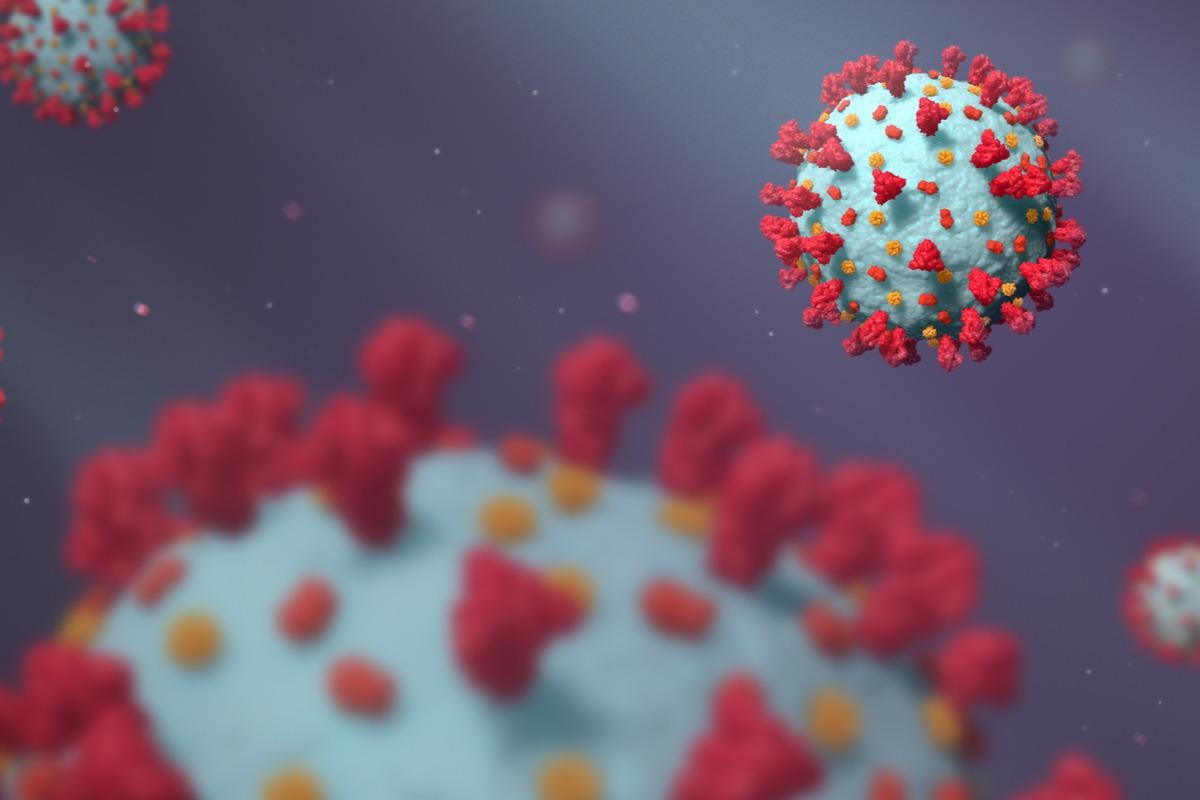The severe acute respiratory syndrome coronavirus 2 (SARS-CoV-2) that is responsible for the ongoing coronavirus disease 2019 (COVID-19) pandemic is constantly undergoing mutations and reemerging as newer variants of concern (VOCs). These mutant strains pose threats of greater spread of the infection and host-immune evasion despite vaccination.
 Study: Reduced antigenicity of Omicron lowers host serologic response. Image Credit: MedMoMedia/Shutterstock
Study: Reduced antigenicity of Omicron lowers host serologic response. Image Credit: MedMoMedia/Shutterstock
The VOC – Omicron (B.1.1.529), which emerged at the end of last year, was found to harbor numerous mutations, including 11 localizing on the receptor-binding site (RBS)—the major target of antibodies.

 This news article was a review of a preliminary scientific report that had not undergone peer-review at the time of publication. Since its initial publication, the scientific report has now been peer reviewed and accepted for publication in a Scientific Journal. Links to the preliminary and peer-reviewed reports are available in the Sources section at the bottom of this article. View Sources
This news article was a review of a preliminary scientific report that had not undergone peer-review at the time of publication. Since its initial publication, the scientific report has now been peer reviewed and accepted for publication in a Scientific Journal. Links to the preliminary and peer-reviewed reports are available in the Sources section at the bottom of this article. View Sources
The study
A new study posted to the bioRxiv* preprint server aimed to clarify whether extensive receptor-binding domain (RBD) mutations could affect the magnitude and immunodominance hierarchy of the host antibody response.
Here, the RBD antigenic profiles for the Wuhan strain (WT) of SARS-CoV-2 were investigated. This systematic study employed a geometric deep learning model (ScanNet10) for predicting epitopes.
Results
Calculation of the antibody binding propensity found correlations with the structurally determined RBD epitope frequency. The findings confirmed that RBS residues have a high propensity for all RBDs. The VOCs – Alpha, Beta, and Delta showed moderate increases in the RBS antigenicity, while that of Omicron was significantly reduced.
It was also noted that eight Omicron mutations (53%) contributed to the decreased antigenicity, whereas the other five Omicron mutations increased the antigenicity. Meanwhile, only 26% of the point mutations decreased the antigenicity. These findings indicated that the lower antigenicity of Omicron may have transpired from evolutionary alterations.
On analyzing adaptive immune responses of immunized mice in vitro, robust and comparable T cell responses were detected. In particular, the splenocytes of these animals produced high levels of interferon (IFN)γ in the setting of reinfection with WT, Delta, or Omicron—which signified Th1-mediated immune response. In addition, these animals also elicited a strong Th17 response. Likewise, the local response in the lungs recorded IFNγ and IL-17 responses.
Measurement of antibody titers disclosed that those of the Omicron-immunized sera were markedly lower by over 15-fold than that of WT, as well as of other VOCs. Therefore, findings from the in vivo experiments resembled the deep learning model and showed that mutations can mar the antigenicity of Omicron.
On evaluating the cross-reactivity of immunized sera, it was found that WT-immunized sera exhibited higher titers against Alpha and Delta RBDs and conferred decreased activity against Beta and more substantially against Omicron. Of note, the antibody evasion by VOCs replicated those revealed in the clinical data. Hence, the RBD immunodominance hierarchy was identical among mice and humans.
In addition, Omicron-immunized sera were detected with notably lower antibody titers against other VOCs, suggesting that Omicron’s RBS is highly antigenic. Cross-reactive antibodies of Omicron-immunized sera with WT RBD showed only a small fraction of the response of WT-immunized sera to Omicron.
Evaluation of cross-reactivity of Beta-immunized sera showed more promising results against Omicron. SARS-CoV-2 pseudovirus assay revealed that despite some cross-reactivity against Omicron, the neutralization activities of WT-immunized sera were negligible. Incidentally, Omicron-immunized sera itself failed to neutralize the Omicron VOC, nor were they potent against the WT strain.
This study employed structural modeling and longitudinal analysis of hCOV229E (common cold coronavirus) RBDs, which pointed towards a trend towards declining antigenicity on RBS, which was sustained until 2010. This pattern seemed to have deviated over the past decade. To explore the potential for further reduction of antigenicity of SARS-CoV-2, stability-preserving newer RBD variants—with mutations resembling those of Omicron—were created. Many such variants were found to have lower antigenicity than Omicron; thus, the antigenicity of this variant could likely fade.
Conclusion
In summary, Omicron convalescent sera extracted from unvaccinated individuals could only weakly neutralize the Omicron VOC. Omicron convalescent sera could barely neutralize other VOCs were. The findings were consistent with preclinical vaccine trials as well as clinical data and uncovered the underlying mechanism that renders the suppressed host-immune response against the Omicron VOC. Furthermore, the results elucidated the future course of the viral evolution and highlighted the upcoming challenges that could be posed during the development of efficient vaccines targeting the Omicron VOC.

 This news article was a review of a preliminary scientific report that had not undergone peer-review at the time of publication. Since its initial publication, the scientific report has now been peer reviewed and accepted for publication in a Scientific Journal. Links to the preliminary and peer-reviewed reports are available in the Sources section at the bottom of this article. View Sources
This news article was a review of a preliminary scientific report that had not undergone peer-review at the time of publication. Since its initial publication, the scientific report has now been peer reviewed and accepted for publication in a Scientific Journal. Links to the preliminary and peer-reviewed reports are available in the Sources section at the bottom of this article. View Sources
Article Revisions
- May 12 2023 - The preprint preliminary research paper that this article was based upon was accepted for publication in a peer-reviewed Scientific Journal. This article was edited accordingly to include a link to the final peer-reviewed paper, now shown in the sources section.